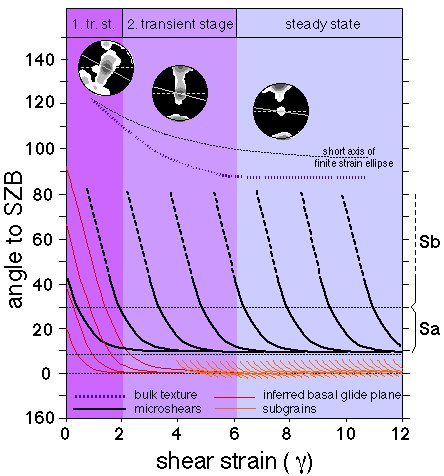
Irrespective of the experimental conditions applied, the following features are observed to accommodate strain irrespective of the temperature and strain rate conditions.
During the first transient stage, inter- and intracrystalline glide planes rotate into orientations for easy glide. This involves high rotation rates of microshears, individual c-axes and bulk textures.
Rotation rates of individual c-axes and of the bulk texture decrease significantly during the second transient stage, while grain boundary migration recrystallization becomes more pronounced. Newly nucleated microshears with steep, Sb orientations and high rotation rates coexist with older microshears with a shallower Sa orientation and lower rotation rates.
The bulk texture is strain invariant at steady state, but deformation on the intra- to intergranular scale is heterogeneous. This involves the continuous nucleation, progressive rotation, and consumption of subgrains. Microshears with an Sa orientation are deactivated at very low angles to the SZB.
Differences in microfabric evolution (e.g. changes in area proportions of grains with specific crystallographic orientations and size) with strain rate and temperature mainly reflect the variations in the relative activity of grain scale mechanisms (click HT-LS, HT-HS, IT-HS and LT-HS buttons).